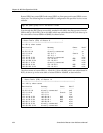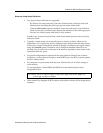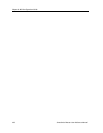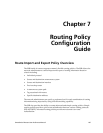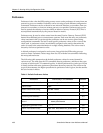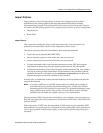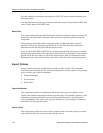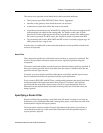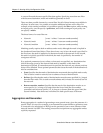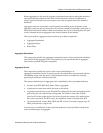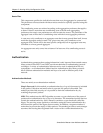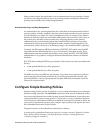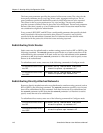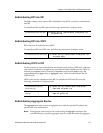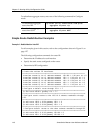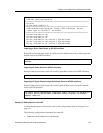
Chapter 7: Routing Policy Configuration Guide
112 SmartSwitch Router User Reference Manual
A route will match the most specific filter that applies. Specifying more than one filter
with the same destination, mask and modifiers generates an error.
There are three possible formats for a route filter. Not all of these formats are available in
all places. In most cases, it is possible to associate additional options with a filter. For
example, while creating a martian, it is possible to specify the allow option, while creating
an import policy, one can specify a preference, and while creating an export policy one
can specify a metric.
The three forms of a route-filter are:
• Network [ exact | refines | between number,number]
• Network/mask [ exact | refines | between number,number]
• Network/masklen [ exact | refines | between number,number]
Matching usually requires both an address and a mask, although the mask is implied in
the shorthand forms listed below. These three forms vary in how the mask is specified. In
the first form, the mask is implied to be the natural mask of the network. In the second,
the mask is explicitly specified. In the third, the mask is specified by the number of
contiguous one bits.
If no optional parameters (exact, refines, or between) are specified, any destination that
falls in the range given by the network and mask is matched, so the mask of the
destination is ignored. If a natural network is specified, the network, any subnets, and any
hosts will be matched. Three optional parameters that cause the mask of the destination to
also be considered are:
• Exact: Specifies that the mask of the destination must match the supplied mask exactly.
This is used to match a network, but no subnets or hosts of that network.
• Refines: Specifies that the mask of the destination must be more specified (i.e., longer)
than the filter mask. This is used to match subnets and/or hosts of a network, but not
the network.
• Between number, number: Specifies that the mask of the destination must be as or
more specific (i.e., as long as or longer) than the lower limit (the first number
parameter) and no more specific (i.e., as long as or shorter) than the upper limit (the
second number). Note that exact and refines are both special cases of between.
Aggregates and Generates
Route aggregation is a method of generating a more general route, given the presence of a
specific route. It is used, for example, at an autonomous system border to generate a route
to a network to be advertised via BGP given the presence of one or more subnets of that
network learned via OSPF. The routing process does not perform any aggregation unless
explicitly requested.



